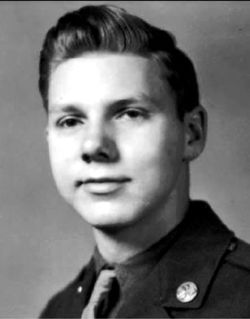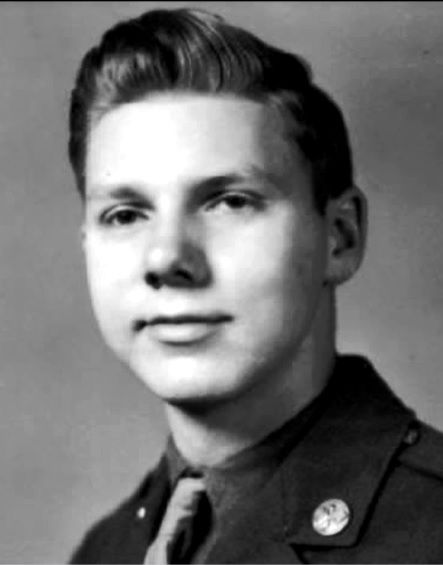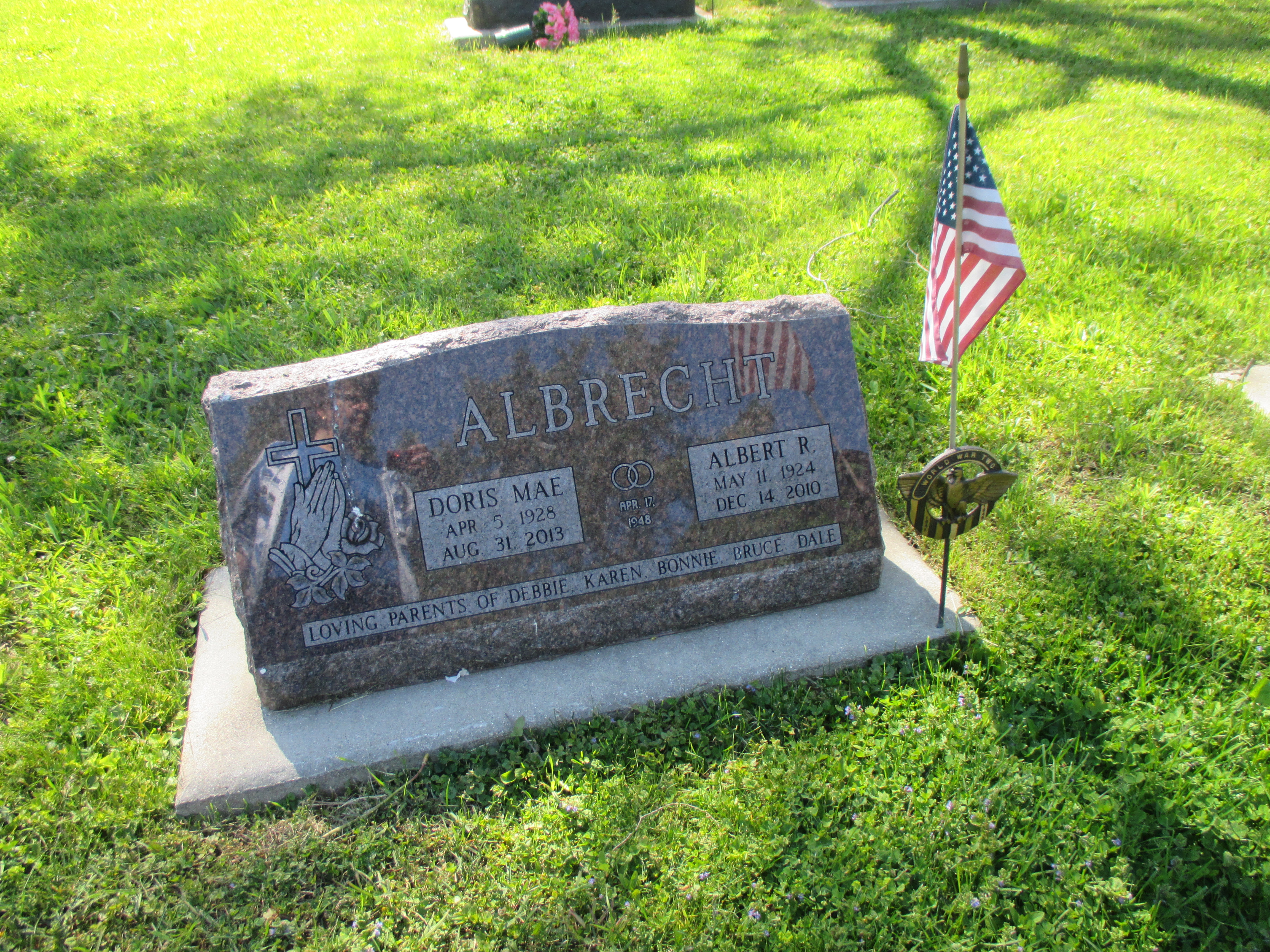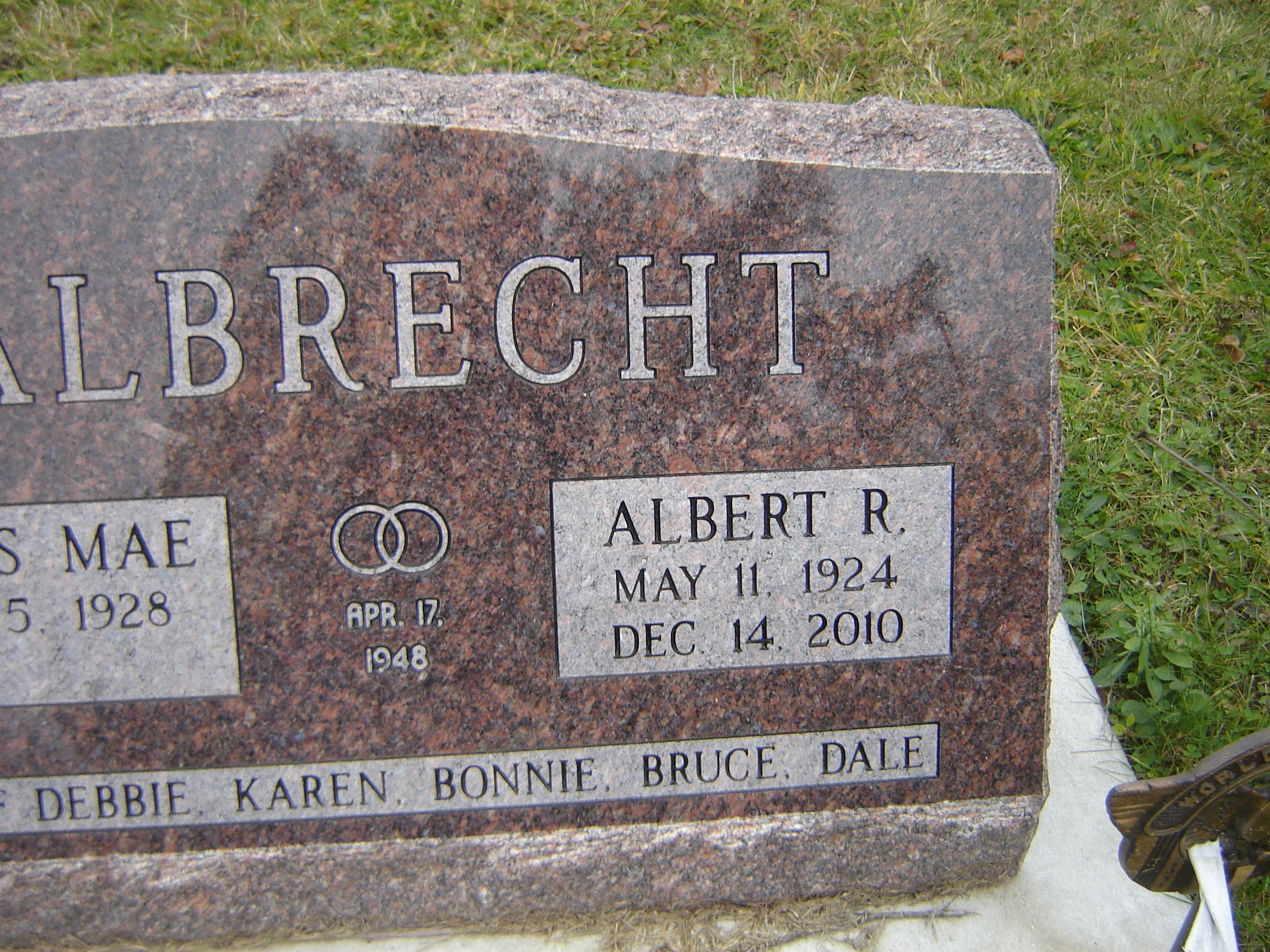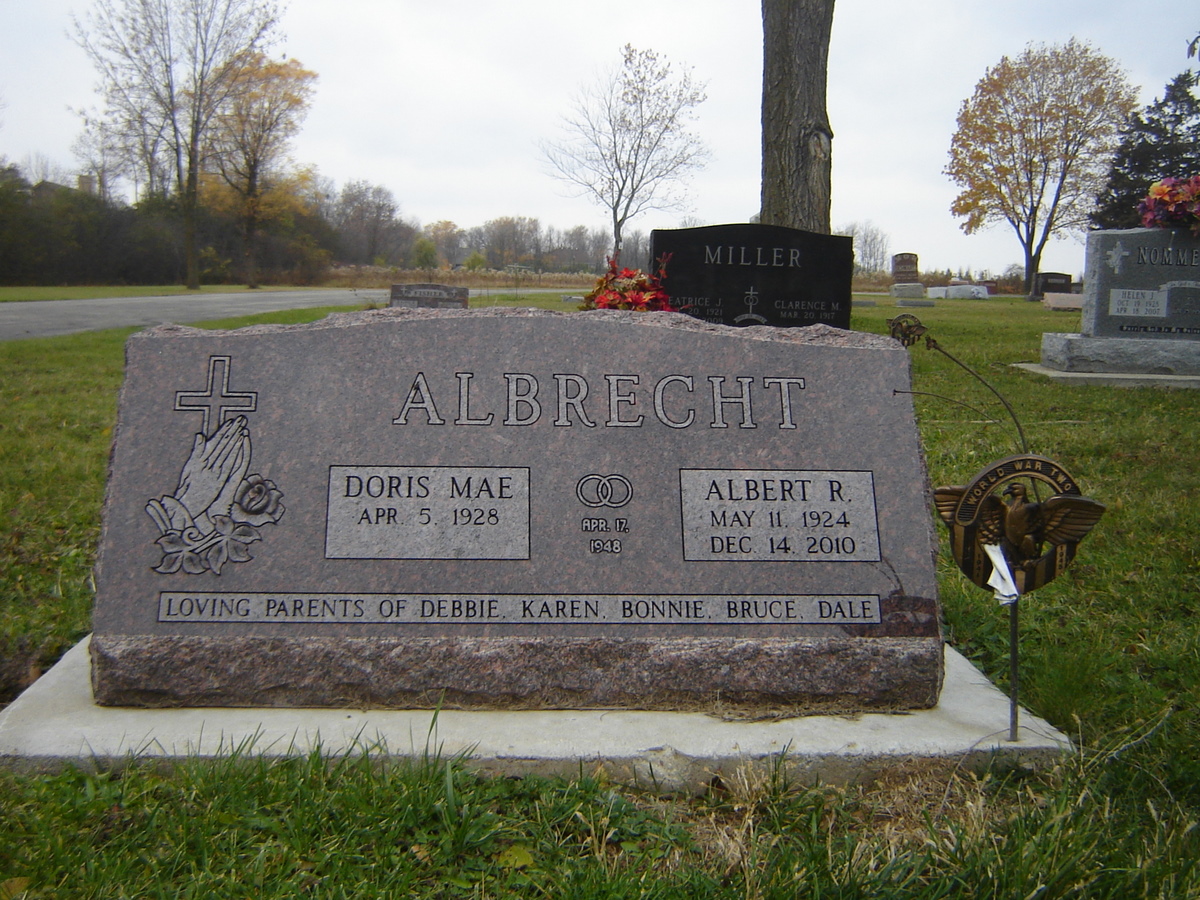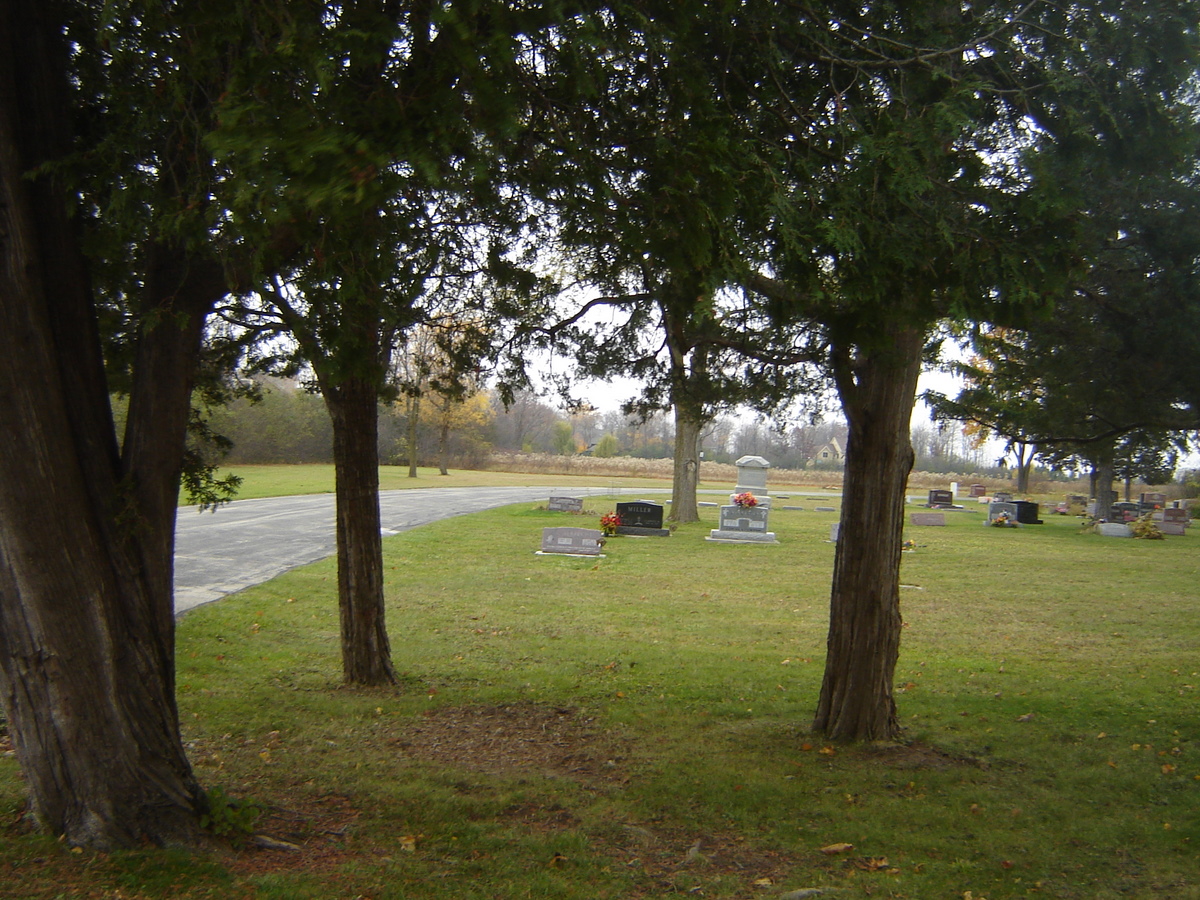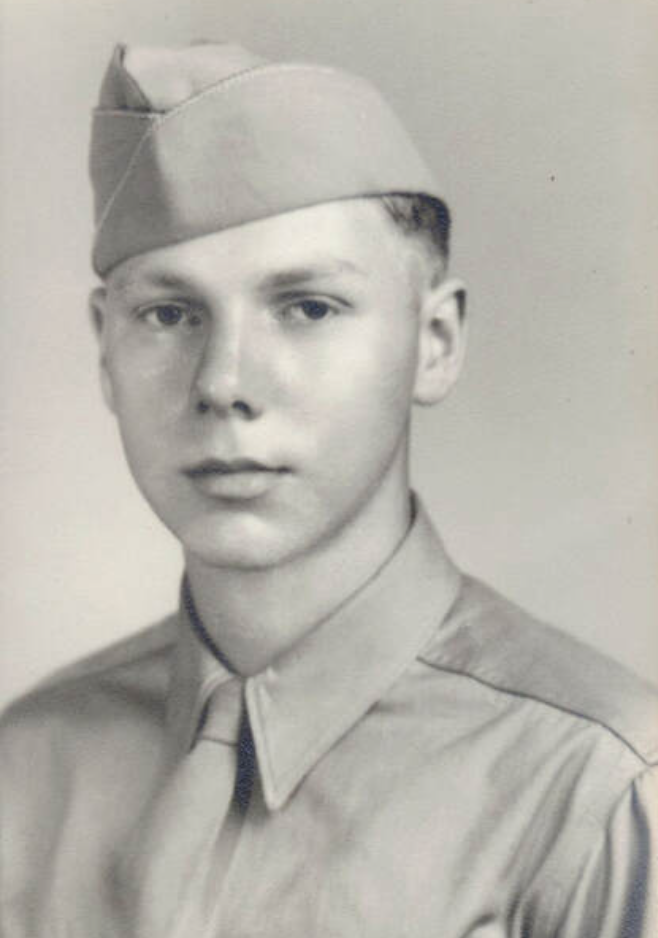One more member of America's Ghost Army has slipped into the night.
Albert "Al" Albrecht Jr. died of pancreatic cancer Tuesday at the Zablocki Veterans Affairs Medical Center. He was 86.
Albrecht was profiled last month in a Journal Sentinel story about the long-secret Ghost Army, a combat deception unit used in Europe during World War II. As directed by U.S. Army officials, Albrecht did not talk about his unit's work for 50 years. He served with a sonic unit that used sound recordings and giant speakers to broadcast the sounds of an army on the move - disinformation to confuse and divert the enemy.
Other units were responsible for giant inflatable rubber tanks and other vehicles, and for airing false radio reports.
"Where else did you have a unit that had rubber tanks, rubber trucks, rubber aircraft and false sound equipment?" Albrecht once said.
Albrecht explained just how effective that could be when it all worked.
"This is the part I like," he said. "We could deflate all the rubber tanks and disappear. In about two hours, we were gone.
"Can you picture the German commander . . . going over there, but finding nothing? Maybe a lot of tank tracks. We slipped away in the night. That's the Ghost Army."
A native of Two Rivers, he was drafted right out of high school. Once home again, he met the former Doris Grenier, and they married in 1948. The couple later settled in Milwaukee, where he worked as a salesman, including for businesses selling motor homes, appliances, building materials and industrial roofing.
Drawing on his experience as a salesman, Albrecht proved to be a natural speaker when he could finally give talks about the Ghost Army.
"He gave credit to others without ever taking personal credit for himself," daughter Karen Skibba said Wednesday. "He was a real hero."
In addition to his wife and daughter, survivors include daughters Debbie Pawlowski and Bonnie Koeberl; sons Bruce and Dale; brother Roger; sister Charleen Steinhauer; grandchildren and great-grandchildren.
Visitation will be from 10 a.m. Saturday until the funeral service at noon, both at Salem Evangelical Lutheran Church, 6840 N. 107th St. Burial with military honors will follow at the church cemetery.
--Milwaukee Journal obituary, Dec., 2010
===========
For 50 years, Al Albrecht did not talk about his unit's missions during World War II.
He was still following orders.
Albrecht, now 86, served with what became known as the Ghost Army. Long top-secret, it was a combat deception unit, using disinformation to support the Allied war effort. Weapons included giant rubber inflatable tanks and sound recordings that could be heard for miles.
"We were told we couldn't tell our wives or anybody about what we did" for 50 years, he later said. "It was totally secret."
Finally free to speak, Albrecht was happy to attend the first reunion of Ghost Army veterans, held 51 years after the end of the war. It proved to be just the beginning of the conversation.
Rick Beyer, a Lexington, Mass., filmmaker working on a film about the Ghost Army, discovered him at a reunion in Washington, D.C. Albrecht was one of more than 20 veterans interviewed for the film.
Now dying of pancreatic cancer, Albrecht was the star Saturday at a special screening of Beyer's film. Bedridden, he was wheeled into the auditorium at the Zablocki Veterans Affairs Medical Center. Other vets at the hospital attended, too, as did Albrecht's friends and family.
"He's been talking away like crazy about the Ghost Army," daughter Karen Skibba said earlier, "because he's so excited about the movie."
Officially, 82 officers and 1,023 enlisted men served with the 23rd Headquarters Special Troops. They completed 21 missions between D-Day and the end of the war, including clandestine work in France, Luxembourg, Belgium and Germany.
"Where else did you have a unit that had rubber tanks, rubber trucks, rubber aircraft and false sound equipment?" Albrecht said in an interview with Beyer.
The camouflage unit had artists - including Bill Blass, later known as a fashion designer - responsible for deploying the large-as-life props. Radio unit personnel worked from elaborate scripts to feed false information to enemy ears.
Albrecht, a native of Two Rivers, was drafted right out of high school and assigned to the sonic unit. Sonic members were responsible for projecting recordings of the sounds, big and small, that mimicked an army on the move. At full blast, the 500-pound speakers could be heard 15 miles away.
"I drove a halftrack," Albrecht told Beyer. "I tell my children that was the biggest boom box you ever heard."
In some instances, Ghost Army efforts were enough to divert and distract the Germans, including enemy pilots reporting to their commanders. Some "special effects" artillery booming added to the illusion.
"This is the part I like," Albrecht continued. "We could deflate all the rubber tanks and disappear. In about two hours, we were gone.
"Can you picture the German commander . . . going over there, but finding nothing? Maybe a lot of tank tracks," he said. "We slipped away in the night. That's the Ghost Army."
Operations were so secret that, even among the Ghost Army units, information was on a need-to-know basis. Albrecht recalled traveling with explosives under their truck seats and orders not to let equipment fall into enemy hands.
The Ghost Army also took on the task of impersonating other personnel - Albrecht still has a collection of patches from outfits he never belonged to - with incorrect patches and ranks and vehicle markings. Sometimes they would visit villages, sampling enough of the local beverages to make disinformation seem credible.
"We were playacting," Albrecht said last week from his hospital bed. "This was a different unit."
"Even his discharge papers were false," his daughter said. "It said he was part of the infantry, but that was false."
Nighttime subterfuge
The units moved under cover of darkness, hoping to confound the enemy and disguise Allied troop movements.
One story became the stuff of Ghost Army lore. Two Frenchmen saw four soldiers pick up a tank - 90-some pounds instead of tons - and turn it around. Arthur Shilstone, who served with the camouflage unit, was on guard duty and saw the Frenchmen's faces.
"The Americans are very strong," Shilstone said, later repeating the story to Beyer.
Under fire, though, rubber tanks and howitzers were not the answer. The Ghost Army's worst days came during Operation Bouzonville in March 1945. Two men were killed and 15 wounded.
"We knew that at any time, we could be attacked, and we had nothing," Albrecht said. "Hey, we had no real weapons. They were mostly all artificial.
"Yes, we were scared," he said. "We didn't know whether we would come back the next day. . . . It was possible that that mission would be our last."
Albrecht returned home and fell in love with a young woman from Two Rivers, Doris Mae Grenier. They married 62 years ago, later moving to Milwaukee. They raised five children and became grandparents and great-grandparents.
He was a natural talking to groups and giving speeches about the Ghost Army, once he was free to do so.
"He took the show on the road as long as he could," Skibba said.
Historians can now debate just how effective the Ghost Army was, but it proved a crucial element in at least one engagement. That came during Operation Viersen later in March 1945, as they created the illusion of a massive Allied movement miles from where the real 9th Army was crossing the Rhine River.
"There's strong evidence, particularly with that operation on the Rhine, that they succeeded in fooling the enemy and saving lives," Beyer said.
"It's one thing to use inflatable tanks and it's another to use inflatable tanks within the sound of enemy artillery, within, in some cases, 600 yards of the front line," Beyer said. "They were 1,000 guys pretending to be 10,000 or 20,000. In their final deception, with the help of some other units, they pretended to be 40,000."
The ruse worked.
"I'm sure the biggest thing that we accomplished was saving many Americans - and also Germans," Albrecht told Beyer. "War is meant to shoot people and kill people, and we saved people. And to me, that made me very proud."
See a video clip of "The Ghost Army" documentary at www.ghostarmy.org
—Milwaukee Journal obituary, Nov., 2010
NOTE: On March 21, 2024, three (3) surviving members of the Ghost Army--and a handful of relatives representing some of the 1,100 men who served in the unit--were honored in a special ceremony at The Capitol in Washington, D.C. where they were awarded Congressional Gold Medals
One more member of America's Ghost Army has slipped into the night.
Albert "Al" Albrecht Jr. died of pancreatic cancer Tuesday at the Zablocki Veterans Affairs Medical Center. He was 86.
Albrecht was profiled last month in a Journal Sentinel story about the long-secret Ghost Army, a combat deception unit used in Europe during World War II. As directed by U.S. Army officials, Albrecht did not talk about his unit's work for 50 years. He served with a sonic unit that used sound recordings and giant speakers to broadcast the sounds of an army on the move - disinformation to confuse and divert the enemy.
Other units were responsible for giant inflatable rubber tanks and other vehicles, and for airing false radio reports.
"Where else did you have a unit that had rubber tanks, rubber trucks, rubber aircraft and false sound equipment?" Albrecht once said.
Albrecht explained just how effective that could be when it all worked.
"This is the part I like," he said. "We could deflate all the rubber tanks and disappear. In about two hours, we were gone.
"Can you picture the German commander . . . going over there, but finding nothing? Maybe a lot of tank tracks. We slipped away in the night. That's the Ghost Army."
A native of Two Rivers, he was drafted right out of high school. Once home again, he met the former Doris Grenier, and they married in 1948. The couple later settled in Milwaukee, where he worked as a salesman, including for businesses selling motor homes, appliances, building materials and industrial roofing.
Drawing on his experience as a salesman, Albrecht proved to be a natural speaker when he could finally give talks about the Ghost Army.
"He gave credit to others without ever taking personal credit for himself," daughter Karen Skibba said Wednesday. "He was a real hero."
In addition to his wife and daughter, survivors include daughters Debbie Pawlowski and Bonnie Koeberl; sons Bruce and Dale; brother Roger; sister Charleen Steinhauer; grandchildren and great-grandchildren.
Visitation will be from 10 a.m. Saturday until the funeral service at noon, both at Salem Evangelical Lutheran Church, 6840 N. 107th St. Burial with military honors will follow at the church cemetery.
--Milwaukee Journal obituary, Dec., 2010
===========
For 50 years, Al Albrecht did not talk about his unit's missions during World War II.
He was still following orders.
Albrecht, now 86, served with what became known as the Ghost Army. Long top-secret, it was a combat deception unit, using disinformation to support the Allied war effort. Weapons included giant rubber inflatable tanks and sound recordings that could be heard for miles.
"We were told we couldn't tell our wives or anybody about what we did" for 50 years, he later said. "It was totally secret."
Finally free to speak, Albrecht was happy to attend the first reunion of Ghost Army veterans, held 51 years after the end of the war. It proved to be just the beginning of the conversation.
Rick Beyer, a Lexington, Mass., filmmaker working on a film about the Ghost Army, discovered him at a reunion in Washington, D.C. Albrecht was one of more than 20 veterans interviewed for the film.
Now dying of pancreatic cancer, Albrecht was the star Saturday at a special screening of Beyer's film. Bedridden, he was wheeled into the auditorium at the Zablocki Veterans Affairs Medical Center. Other vets at the hospital attended, too, as did Albrecht's friends and family.
"He's been talking away like crazy about the Ghost Army," daughter Karen Skibba said earlier, "because he's so excited about the movie."
Officially, 82 officers and 1,023 enlisted men served with the 23rd Headquarters Special Troops. They completed 21 missions between D-Day and the end of the war, including clandestine work in France, Luxembourg, Belgium and Germany.
"Where else did you have a unit that had rubber tanks, rubber trucks, rubber aircraft and false sound equipment?" Albrecht said in an interview with Beyer.
The camouflage unit had artists - including Bill Blass, later known as a fashion designer - responsible for deploying the large-as-life props. Radio unit personnel worked from elaborate scripts to feed false information to enemy ears.
Albrecht, a native of Two Rivers, was drafted right out of high school and assigned to the sonic unit. Sonic members were responsible for projecting recordings of the sounds, big and small, that mimicked an army on the move. At full blast, the 500-pound speakers could be heard 15 miles away.
"I drove a halftrack," Albrecht told Beyer. "I tell my children that was the biggest boom box you ever heard."
In some instances, Ghost Army efforts were enough to divert and distract the Germans, including enemy pilots reporting to their commanders. Some "special effects" artillery booming added to the illusion.
"This is the part I like," Albrecht continued. "We could deflate all the rubber tanks and disappear. In about two hours, we were gone.
"Can you picture the German commander . . . going over there, but finding nothing? Maybe a lot of tank tracks," he said. "We slipped away in the night. That's the Ghost Army."
Operations were so secret that, even among the Ghost Army units, information was on a need-to-know basis. Albrecht recalled traveling with explosives under their truck seats and orders not to let equipment fall into enemy hands.
The Ghost Army also took on the task of impersonating other personnel - Albrecht still has a collection of patches from outfits he never belonged to - with incorrect patches and ranks and vehicle markings. Sometimes they would visit villages, sampling enough of the local beverages to make disinformation seem credible.
"We were playacting," Albrecht said last week from his hospital bed. "This was a different unit."
"Even his discharge papers were false," his daughter said. "It said he was part of the infantry, but that was false."
Nighttime subterfuge
The units moved under cover of darkness, hoping to confound the enemy and disguise Allied troop movements.
One story became the stuff of Ghost Army lore. Two Frenchmen saw four soldiers pick up a tank - 90-some pounds instead of tons - and turn it around. Arthur Shilstone, who served with the camouflage unit, was on guard duty and saw the Frenchmen's faces.
"The Americans are very strong," Shilstone said, later repeating the story to Beyer.
Under fire, though, rubber tanks and howitzers were not the answer. The Ghost Army's worst days came during Operation Bouzonville in March 1945. Two men were killed and 15 wounded.
"We knew that at any time, we could be attacked, and we had nothing," Albrecht said. "Hey, we had no real weapons. They were mostly all artificial.
"Yes, we were scared," he said. "We didn't know whether we would come back the next day. . . . It was possible that that mission would be our last."
Albrecht returned home and fell in love with a young woman from Two Rivers, Doris Mae Grenier. They married 62 years ago, later moving to Milwaukee. They raised five children and became grandparents and great-grandparents.
He was a natural talking to groups and giving speeches about the Ghost Army, once he was free to do so.
"He took the show on the road as long as he could," Skibba said.
Historians can now debate just how effective the Ghost Army was, but it proved a crucial element in at least one engagement. That came during Operation Viersen later in March 1945, as they created the illusion of a massive Allied movement miles from where the real 9th Army was crossing the Rhine River.
"There's strong evidence, particularly with that operation on the Rhine, that they succeeded in fooling the enemy and saving lives," Beyer said.
"It's one thing to use inflatable tanks and it's another to use inflatable tanks within the sound of enemy artillery, within, in some cases, 600 yards of the front line," Beyer said. "They were 1,000 guys pretending to be 10,000 or 20,000. In their final deception, with the help of some other units, they pretended to be 40,000."
The ruse worked.
"I'm sure the biggest thing that we accomplished was saving many Americans - and also Germans," Albrecht told Beyer. "War is meant to shoot people and kill people, and we saved people. And to me, that made me very proud."
See a video clip of "The Ghost Army" documentary at www.ghostarmy.org
—Milwaukee Journal obituary, Nov., 2010
NOTE: On March 21, 2024, three (3) surviving members of the Ghost Army--and a handful of relatives representing some of the 1,100 men who served in the unit--were honored in a special ceremony at The Capitol in Washington, D.C. where they were awarded Congressional Gold Medals
Inscription
APR. 17, 1948
LOVING PARENTS
